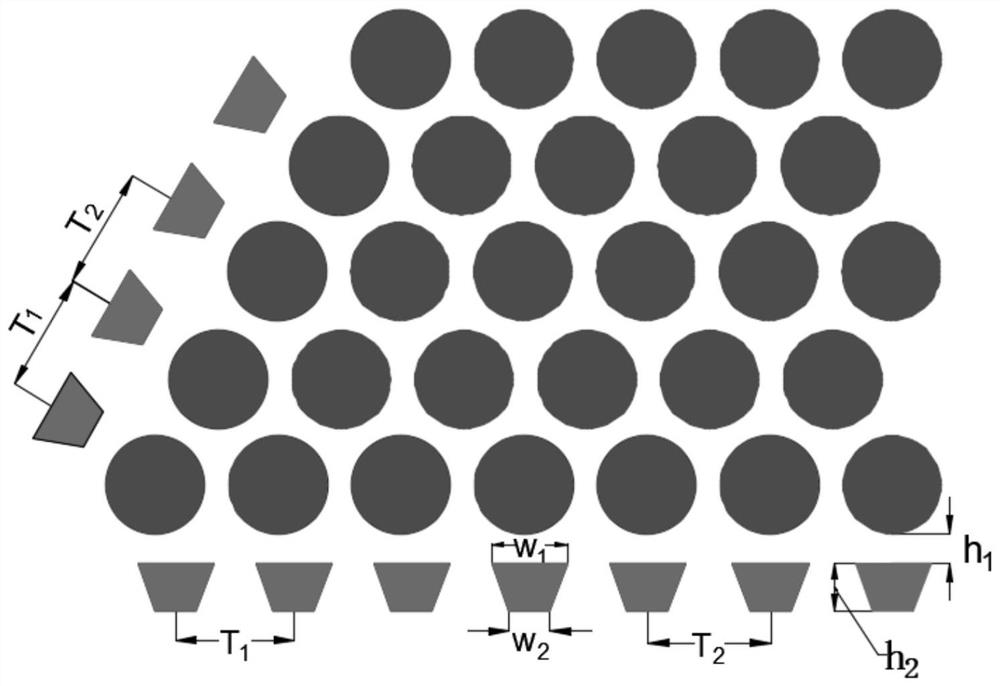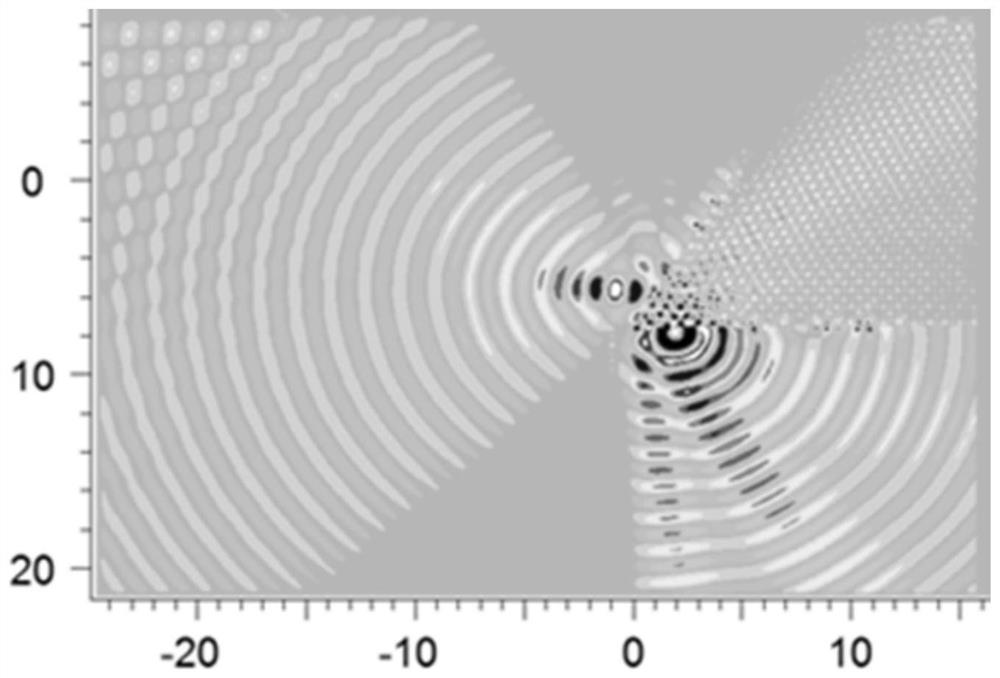Photonic crystal super-resolution imaging device with variable period grating
A super-resolution imaging and photonic crystal technology, applied in optical components, instruments, optics, etc., can solve the problems of photonic crystals, such as the absence of simultaneously negative permittivity and permeability, and the controversy over the super-resolution imaging mechanism. The effect of breaking through the diffraction limit and improving imaging resolution
- Summary
- Abstract
- Description
- Claims
- Application Information
AI Technical Summary
Problems solved by technology
Method used
Image
Examples
Embodiment Construction
[0017] First, the parameters of the photonic crystal are designed so that the equivalent refractive index is -1. The background material is a silicon medium with a refractive index of n=3.45, and air columns are arranged periodically in the silicon medium in a hexagonal lattice. Air column radius r = 193.5nm, lattice constant a = 482nm.
[0018] like figure 1 The schematic diagram of the photonic crystal imaging process is shown. The point source (Point Source) is placed in the near-field range below the photonic crystal. After negative refraction, a virtual image point (Image) is formed inside the photonic crystal, and the internal image point is negatively refracted. It acts on the external image space of the photonic crystal for imaging. Because the photonic crystal has an equivalent refractive index of -1, it can amplify the evanescent wave of the light source and achieve imaging that breaks through the diffraction limit. However, the surface structure of the photonic c...
PUM
 Login to View More
Login to View More Abstract
Description
Claims
Application Information
 Login to View More
Login to View More - R&D
- Intellectual Property
- Life Sciences
- Materials
- Tech Scout
- Unparalleled Data Quality
- Higher Quality Content
- 60% Fewer Hallucinations
Browse by: Latest US Patents, China's latest patents, Technical Efficacy Thesaurus, Application Domain, Technology Topic, Popular Technical Reports.
© 2025 PatSnap. All rights reserved.Legal|Privacy policy|Modern Slavery Act Transparency Statement|Sitemap|About US| Contact US: help@patsnap.com



